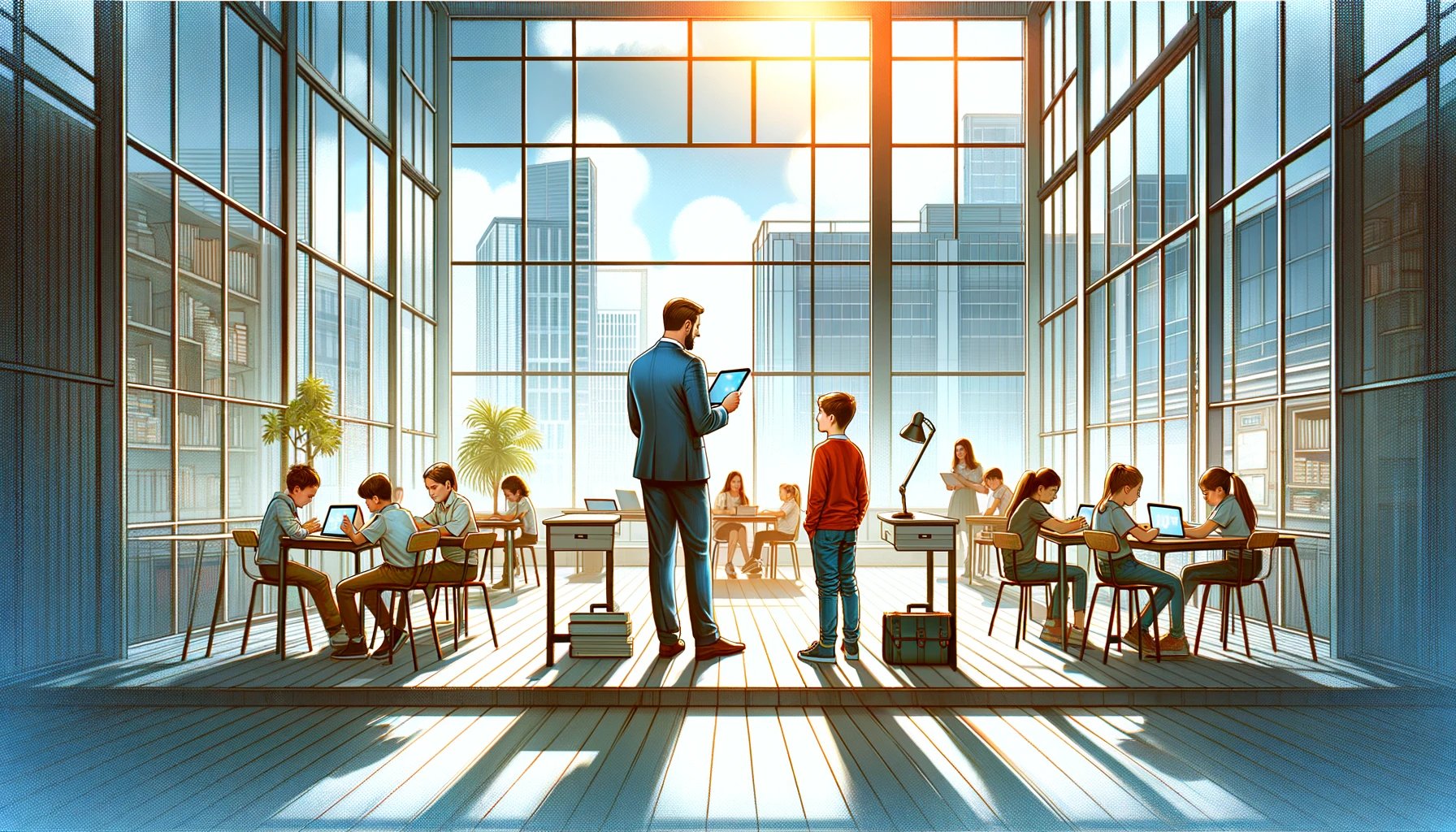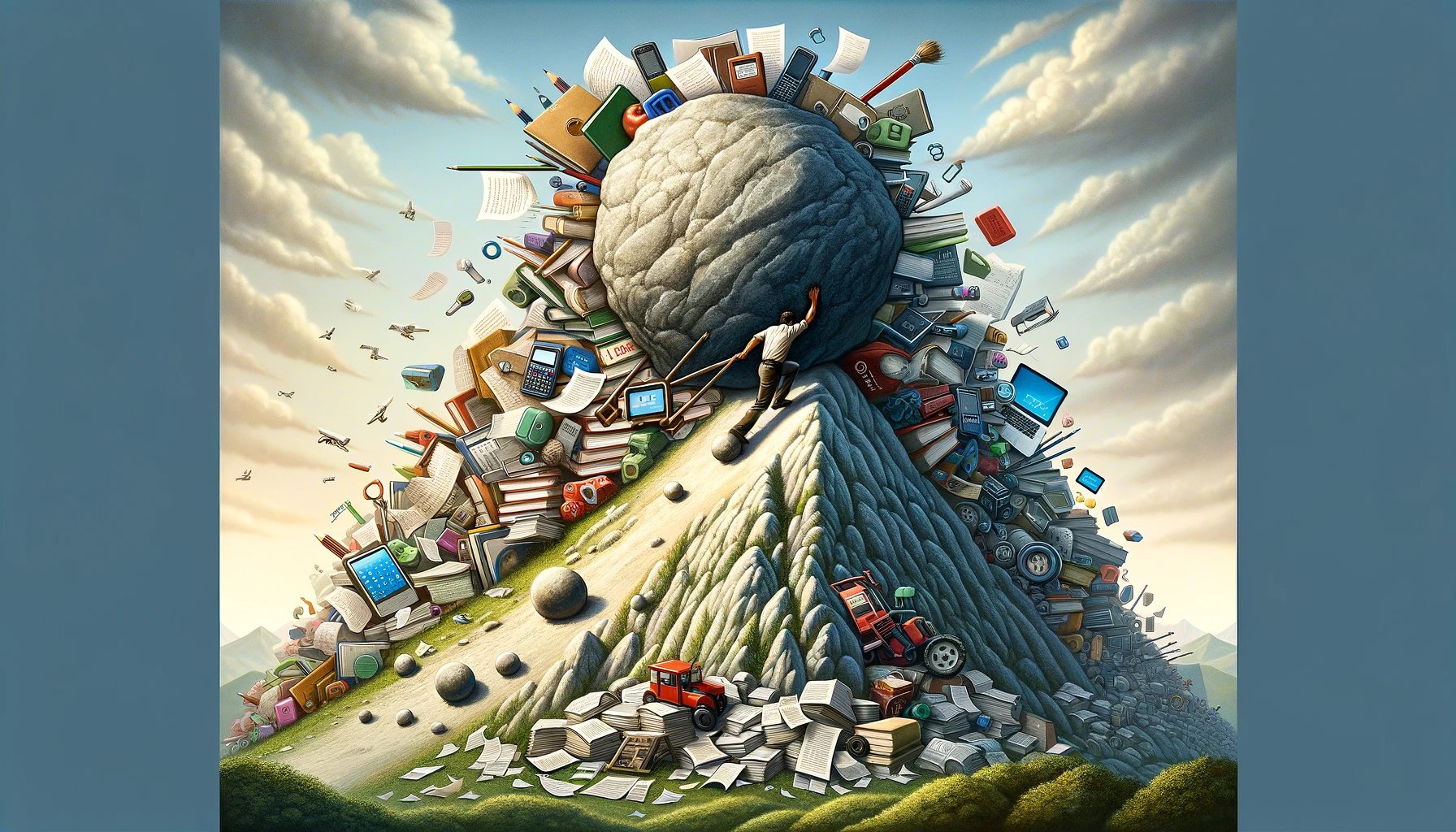This rather challenging question is at the heart of this article – the fourth and penultimate blog in our series on the challenges of implementing digital education. Throughout the series, we have argued that the promise of digital resources, such as digital devices, learning tools, and digital content, needs to be balanced against other educational dimensions, such as principles, practices, and roles.
This article focuses on the roles dimension of the educational model we’ve adopted to guide us. Initially, we planned to discuss the requirements of the various stakeholders in education, including teachers, principals, students, and parents. However, when I reviewed the changing nature of my role as a teacher, my observations struck me as urgent, and they changed the scope of the article.
The Teacher’s Perspective
Everyone knows what a teacher does until they are asked to describe the role and its duties. Indeed, just a few decades ago, the definition was narrower, simpler, and clearer. The teacher’s role was as an information dispenser standing in front of 30 students at a blackboard - imparting knowledge using standardised lessons. Testing was also standardised, and student behaviour management was strictly controlled, verging on custodial!
The accelerating societal changes in recent years have practically obliterated this approach.
In 2024, Teachers look more like learning facilitators. They are required to perform social work in the classrooms, acting as psychologists, therapists, judges, police officers, members of the peer group, and substitutes for parents.
Merely imparting knowledge is no longer sufficient. This is not only because of the emerging requirements I’ve just described but also because knowledge, which in the past was primarily limited to books and required dispensation, is now ubiquitous in digital form.
The Rise of Methodological Competencies and Autonomous Learning
Educators need to guide adolescents in acquiring vital competencies, obtaining these autonomously in project-based models where they learn suggested methodological competencies such as those proposed in the 4Cs model: cooperation, creativity, collaboration, and critical thinking. This model was developed to address the skills gap between traditional educational outcomes and the competencies needed in a rapidly changing, technology-driven global economy.
The 4Cs have grown to 7Cs, adding three additional competencies: Character Education, Citizenship, and Computer and digital technologies literacy. This expansion reflects an even broader understanding of the skills and values necessary for success in the 21st century.
Children are also expected to learn autonomously and should be able to forge their own individual learning paths. Naturally, this leads to significant developments at the methodological and didactic levels, and many teachers use "MakerSpace" and "Design Thinking" models.
Standardised lessons have lost ground to differentiated learning. Still, there is a widespread desire to standardise the teaching profession from a performance standpoint to measure it similarly to other occupations in the economy.
Such radical change will make teaching significantly more difficult in 2024, and it will undoubtedly contribute to the number of teachers leaving the profession.
A Comforting Thought?
However, I’ve found it helpful to reflect that every major shift occurs in phases, and at least one of these phases manifests itself as a crisis. Thomas S. Kuhn identified this structure in his 1962 book "The Structure of Scientific Revolutions."
Kuhn describes how ‘normal science’ and the process of adding to existing knowledge through experiments, study and ‘puzzle solving’ result in a paradigm: a stable model encompassing the whole field of scientific understanding.
I think of the stable model we are currently challenging as the "Gutenberg Universe." This model evolved slowly and has persisted for an extended period.

From Gutenberg to Turing
The next phase Kuhn identifies is triggered by some bright individual encountering an anomaly - a discrepancy between the current paradigm and experimental results. This precipitates what Kuhn calls a crisis, as the discrepancy cannot be resolved. There is much debate, accompanied by hand waving and shouting, as adherents of the current paradigm try to dismiss the discrepancy. In contrast, revolutionaries try to show that the current paradigm is wrong and outdated.
At some point, sufficient new information comes to light to overthrow the old paradigm, and a new one takes its place, what Kuhn refers to as the “paradigm shift.” I refer to the emerging digital paradigm we attempt to shift to as the ‘Turing Universe’.
The Factors Behind the Educational Crisis
This is my perspective on the factors that constitute a crisis in Kuhn’s terms. It might not seem helpful to some to use this term, but I have found it comforting to reflect that this is how change works in almost every field, and no matter how difficult - and that this phase will pass. Here is my list of ‘anomalies’ that precipitate the crisis. No doubt you can think of more!
- The expanded scope of teaching, which now requires more than just subject knowledge, makes the entire education broader, deeper, and more challenging. This can also push their core work into the background.
- Professional development
- Coaching, parent-teacher conferences
- Documentation of one's own work and that of students
- Adherence to quality assurance measures
- Conferences and meetings
- Development of school education concepts
- Exchange with colleagues
- Liaison with professional agencies in education, psychology, medicine
- Dealing with malfunctioning technology or technology that requires more resources than it saves.
- First-class social skills, which are not natural to all teachers, are increasingly required.
- The transition to the digital age and the use of new tools are often hastily introduced and without pedagogical integration. The decision criteria here are too often political, financial, and economic.
- Introducing new pedagogical concepts is often hastily and too often ideologically influenced without sufficient critical examination. Colleagues with a "non-contemporary" attitude may be marginalised as ‘impediments to progress’.
- The increase in psychological stress is due to the breadth of activities and the questioning of the teaching role by students, parents, and the wider society.
Evidence
Evidence for the crisis based on its effects on educators, as described in that last bullet point, is readily available. A good example is the 2023 Annual Teacher Wellbeing Index, which provides insight into the mental health and well-being of teachers and education staff working in the UK.

- Stress in the workplace 78% of all education staff are stressed (3% increase on 2022). The same percentage of schoolteachers are stressed (6% increase on 2022 and the highest of all job roles)
- Burnout 36% of schoolteachers reported experiencing burn-out (9% increase on 2022
- Insomnia 51% of staff experience insomnia or difficulty sleeping (6% increase on 2022)
The 2023 report's top recommendation is that “all education departments must develop a coherent strategy to improve the well-being of the education workforce.” We couldn’t agree more! And technology is not helping, read our point of view: The unfilled Promise of Digital.
Was Sisyphus a Teacher?
When contemplating the teacher's situation today, it can be tempting to think that way! After a difficult day, it's easy to see the teaching landscape as similar to the one Sisyphus occupied—eternally toiling to roll a heavy rock uphill. However, as Kuhn has demonstrated, we are never in a static state, and we are optimistic about the profession's future.
What is clear to us is that the promise of digital resources such as devices, learning tools, and content needs to be balanced against the requirements of three other critical educational dimensions: principles, practices, and roles. This balance enables us to ‘put the lesson at the centre’ and get teachers to their happy place, which is to get back to teaching.
The three principles we embrace as part of that model are extremely simple. The first is to prioritise the empowerment of educators and improve teachers' working lives. This gives us a very solid ‘why’ that supports all our work. The second is to uphold the principle of digital assistance—digital works for teachers, not the other way around! This helps us greatly with ‘how’.

The third is that by respecting the first two principles, we can enable the promise of the digital classroom and create the conditions that enable innovation in teaching and learning. In other words, if we can free up teacher’s time and get digital working for us a world of possibilities emerges that we can explore step by step. You can read about my own experience of this in the article Making the Shift to Digital Teaching.
In doing this, we seek to keep traditional paths open and offer new possibilities.
Teachers can use our app to develop new methods, preserve classic and proven approaches, and determine the degree and speed of digitalisation themselves.
We model traditional school structures but can also embrace concepts of autonomous learning, individual learning paths, distance education, level-based teaching, project-based learning, and others.
Above all, we aim to support teachers so they can focus on the core of the role and what they love most– teaching.